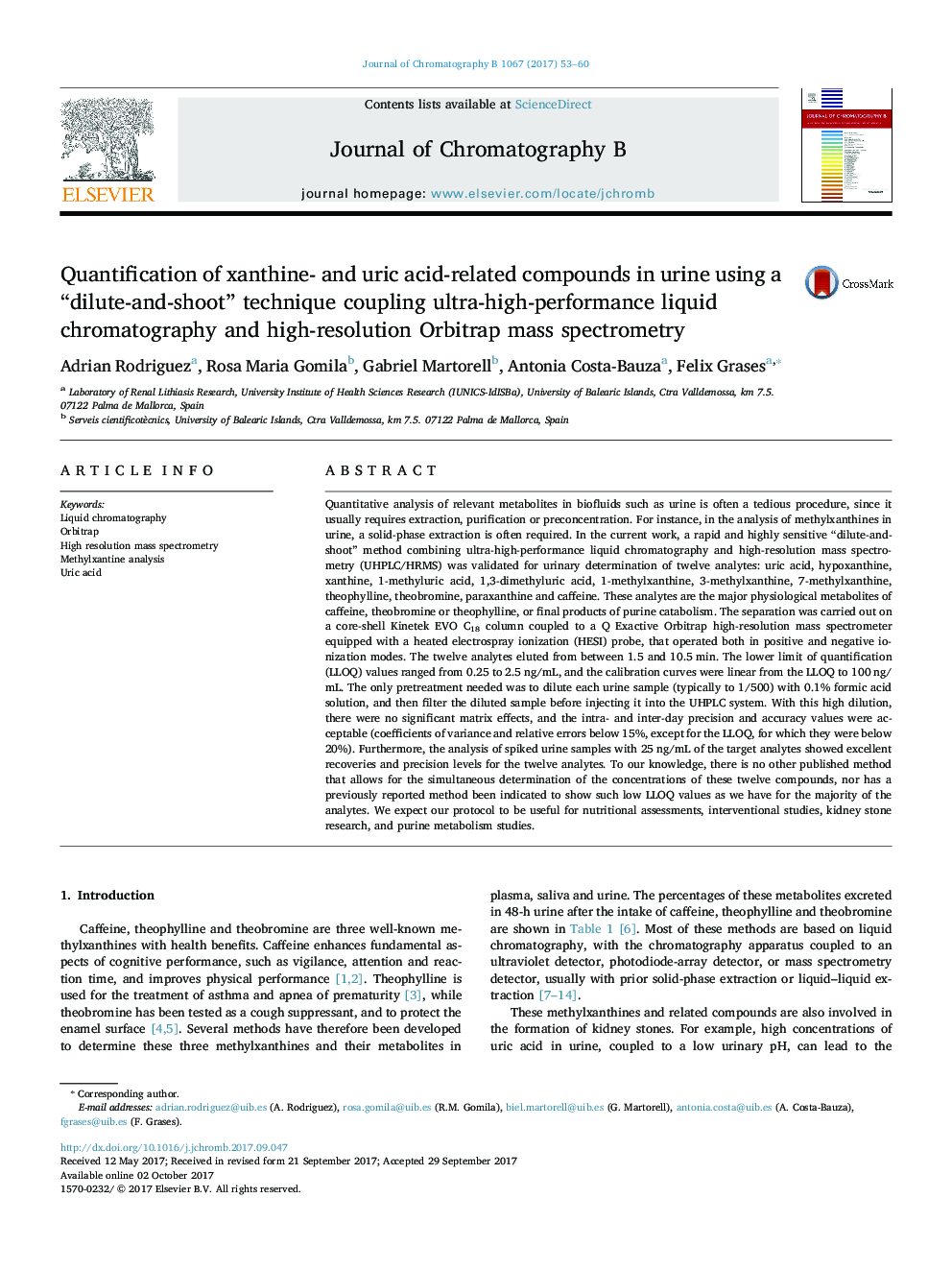| Article ID | Journal | Published Year | Pages | File Type |
|---|---|---|---|---|
| 5136135 | Journal of Chromatography B | 2017 | 8 Pages |
â¢Analysis of twelve uric acid- and xanthine- related compounds in urine.â¢Caffeine, theobromine, theophylline and their metabolites are target analytes.â¢Different compounds related to renal lithiasis can be also analyzed.â¢No sample pretreatment is needed. Dilute-and-shoot technique is used.â¢Short analysis time and low LLOQ.
Quantitative analysis of relevant metabolites in biofluids such as urine is often a tedious procedure, since it usually requires extraction, purification or preconcentration. For instance, in the analysis of methylxanthines in urine, a solid-phase extraction is often required. In the current work, a rapid and highly sensitive “dilute-and-shoot” method combining ultra-high-performance liquid chromatography and high-resolution mass spectrometry (UHPLC/HRMS) was validated for urinary determination of twelve analytes: uric acid, hypoxanthine, xanthine, 1-methyluric acid, 1,3-dimethyluric acid, 1-methylxanthine, 3-methylxanthine, 7-methylxanthine, theophylline, theobromine, paraxanthine and caffeine. These analytes are the major physiological metabolites of caffeine, theobromine or theophylline, or final products of purine catabolism. The separation was carried out on a core-shell Kinetek EVO C18 column coupled to a Q Exactive Orbitrap high-resolution mass spectrometer equipped with a heated electrospray ionization (HESI) probe, that operated both in positive and negative ionization modes. The twelve analytes eluted from between 1.5 and 10.5Â min. The lower limit of quantification (LLOQ) values ranged from 0.25 to 2.5Â ng/mL, and the calibration curves were linear from the LLOQ to 100Â ng/mL. The only pretreatment needed was to dilute each urine sample (typically to 1/500) with 0.1% formic acid solution, and then filter the diluted sample before injecting it into the UHPLC system. With this high dilution, there were no significant matrix effects, and the intra- and inter-day precision and accuracy values were acceptable (coefficients of variance and relative errors below 15%, except for the LLOQ, for which they were below 20%). Furthermore, the analysis of spiked urine samples with 25Â ng/mL of the target analytes showed excellent recoveries and precision levels for the twelve analytes. To our knowledge, there is no other published method that allows for the simultaneous determination of the concentrations of these twelve compounds, nor has a previously reported method been indicated to show such low LLOQ values as we have for the majority of the analytes. We expect our protocol to be useful for nutritional assessments, interventional studies, kidney stone research, and purine metabolism studies.
